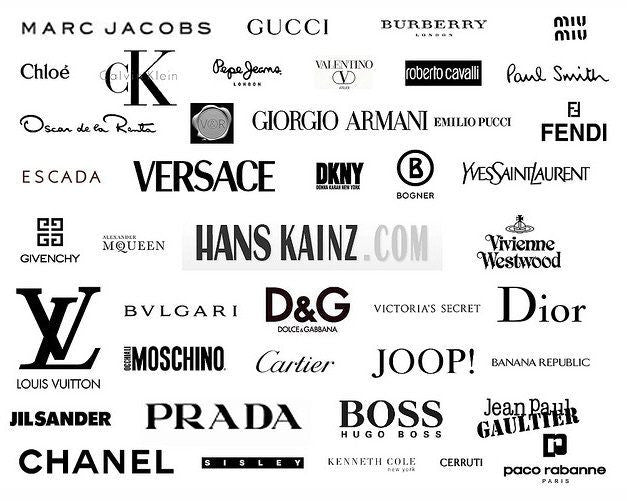
What's in a Name?
Every spring, the International Auto Show comes to the Georgia World Congress Center here in Atlanta. I've been a few times, but my husband rarely misses it. He cares a lot more than I do about cars*. My mom shares his interest and they bond over a mutual love of roadsters**.
As a suburban mother of three, the last thing I'd add to my to-do list is another minute behind the wheel, no matter how stylish. Still, I tag along for the together time, and I've enjoyed seeing the innovations coming down the road (hardy har). We saw the Saturn Sky, the Mini Cooper, and the SmartCar (which looked like a toy at the time), long before each hit the U.S. market. And there are usually beautiful classic (or shall we say vintage?) and exotic cars on display.
One year's Auto Show, however, stands out as particularly memorable.
This was well before the mortgage meltdown and ensuing recession. It was smack in the middle of our national spending frenzy, when big was good, and bigger even better. Personally, I'd never bought in. My husband shared my views on fiscal responsibility.
We've always chosen to live within our means. We drove a Hyundai sedan. We bought a split-level ranch in an older neighborhood, then fought alongside our neighbors to win an ordinance preventing McMansion infill from blocking our sunlight and lowering our modest property values. Unlike so many of our unfortunate countrymen, our property is now worth just a bit more, rather than quite a bit less, than it was when we bought it. It was never overvalued to begin with.
Back then, I found the sky-rocketing housing prices (and those willing to pay them) crazy and our collective desire for increasingly gigantic vehicles misguided and short-sighted. To my mind, the whole "more is more" trend came to a pus-filled head with the Hummer. Not only did this ridiculous vehicle cost a fortune, guzzle gas, and make courteous parking all but impossible, it glorified war.
Sure, little kids thought Hummers were cool. My nephew jumped up and down like a lunatic whenever he spotted one. Most 6-year-olds given a choice would opt for a dump truck or hook-and-ladder as their around-town vehicle. That's perfectly reasonable when you're in Kindergarten. But what about grown-ups? Who would want one of these enormous, expensive, unparkable behemoths? And why?
Oh, I can see the appeal if you live, say, on a 10,000 acre cattle ranch and need a powerful vehicle to safely navigate undeveloped terrain, ford streams, and outrun stampeding herds. But when is the last time you saw a gargantuan SUV anywhere more remote than the mall parking lot? Or carrying more than two or three full-sized people? If you have, it's surely the exception. Or perhaps you live in the Outback.
Anyway, here's what happened at that most memorable of Auto Shows:
Dan: Look, there's a Hummer. Your favorite.
Me: Oh, let's go see what it's like inside!
Dan: Sure. Interesting to know what you get for the money.
(we climb in)
Me: Is this thing bare-boned and uncomfortable, or am I being unfair?
Dan: No, it's about as luxurious as a Geo Metro.
Me: How much do you think it costs?
(enthusiastic sales rep pops in and joins us, hugely grinning)
Rep: Folks, it's $55K and worth every penny.
Dan: Seems like a lot for cloth seats.
Rep: But it's a Hummer! A Hummer!
Me: So?
Rep: So... it's rare! There are only 5,000 of these babies in the entire world!
Me: There are only 200 cases*** of Ebola in the entire world. But I wouldn't want one of those, either.
Dan: OK, then. Time to move on.
We still laugh and mention it when we see something wildly overpriced or highly overvalued.
And I tend to think about it when I read fashion magazines.
What we've dubbed "The Ebola Encounter" solidified my long-held theory that some people actually don't know what they like, and look to others to tell them. It's how they decide what to drive, what to wear, what to buy. They let someone else make those decisions for them, because they either don't have any opinions or, more likely, they don't trust them. They need ongoing external validation.
Yes, beauty is in the eye of the beholder, and taste is a personal and individual thing. And yes, our preferences are influenced by our childhood, and the opinions of our parents and peers. We all want to belong, to feel accepted, to fit in.
But I'm not talking about conforming or even about taste. I'm talking about knowing what you actually like, without anyone else dictating it to you. I'm talking about having an opinion. Not whether mine or hers is better than yours. But whether you have one at all, and trust it.
Which leads me to ask: Do you need a label to know if you like something? Does the label dictate if that particular something will work for, flatter, or otherwise make sense for you and your unique set of circumstances, measurements, skin tone, income? Would you still like that same item if it didn't have that particular label? What if it didn't cost as much? What if a celebrity weren't wearing or driving or using it?
A pouting model, wearing only a man's unbuttoned dress shirt and strappy heels, lounges in a luxurious hotel room. Her hair is perfectly disheveled, mascara slightly smudged. We suspect what she's been up to. She gazes toward the bathroom door, and yes, there we can see, obscured by steam, a hollywood hunk (or perhaps it's that soccer guy), shaving at the sink. So... what does the brand name on the sole need to be in order for you to like her shoes?
What if it were Prada? How about Payless? Would either make you want them? Which would make you like them? Are those different questions?
Seems to me, if you like something, it doesn't matter the back story, what name is on it, who else likes it or what it costs. Sure, the price will determine whether you can buy it, but should it determine whether you like it? Shouldn't the appeal be based on your own inner and very personal sense of style and aesthetics?
And once you decide that you do, in fact, like the look of something, there's the question of quality. Do particular labels, however pricey or desirable (or rare, hehe), automatically equate to good value? Or, do they merely suggest impeccable construction and lasting performance? Does the name imply something you don't receive? Are you paying for an image instead of an actuality?
Take any highly sought-after, well-established designer. Most have their runway Collections, and any number of diffusion lines. But while some create those more-affordable options through shrewd fabric, embellishment and construction choices, others simply stick their name on, well, crap, allowing the label alone to conjure couture. It's a trick. But you don't have to buy it.
Step 1. Educate yourself.
Ignoring the labels entirely, inspect each garment carefully. Note how it is put together and how the fabric looks and feels. Is there lining? Pockets? What do those look like? How do the seams look? How are the fabric's patterns used on the garment? How does the garment hang? You will soon be able to spot quality, or a lack of it, no labels needed.
Step 2. Do a bit of personally relevant research.
Investigate your favorite designers and brands. What do experts and knowledgeable laymen have to say about product quality across the designer's various lines? If possible, go see the items in person. What do you notice with your newfound knowledge of construction and fabrics? Do the items live up to the label?
In some cases, they absolutely will. You will be able to see, feel, even smell the quality. You will understand why the collection garments command such high prices, and why the diffusion-line garments are, in fact, an excellent value.
In other cases, they won't. There are designers content to coast on their brand's reputation. With the general population less savvy about what constitutes quality and more image-conscious than ever, designers today can allow even their high-end offerings to fall short of their label's promise. Certain designers -- whether lazy, greedy, or pressured by investors to widen the profit margins -- will take advantage of our collective willingness to pay top dollar for a label and little more.
Armed with the right knowledge, and a firm confidence in your own sense of style, you can be sure the one being taken advantage of isn't you.
In my opinion, vintage clothing offers the best bang for your wardrobe buck. For one thing, no matter how hip your personal style, you'd be hard pressed to find a trend that hasn't come around at least once before. This season, for example, you can likely find that up-to-the-minute floral, neon, or boho look you desire in a vintage piece. And unless you're seeking the rare or historically significant items you bid against museums for, vintage is your budget's best friend.
What's more, a dress that's made it through 40 years of use in excellent condition will likely be around a good while longer. I'm confident that many of my mid-century dresses will easily outlast their modern equivalents. The fabric and construction are far superior. These clothes were made to last. And they do. Now that's value. I'd bet this 60s neon mini dress is still in great shape the next time the colorful trend rolls around. And just look at that -- it's got no label at all.

* Even though I am not a car person, if you are ever in the vicinity, I highly recommend a trip to the Microcar Museum in Madison, Georgia. Just about everything becomes fascinating when much bigger or much smaller than standard size. And if you think the SmartCar is small, or cute, you will just flip when you see some of the models on exhibit here. And talk about style. Some of my favorite models had wicker seats! And check out the trunk (a.k.a. boot) on the single-door, red Isetta next to us, below.
At the Microcar Museum, 8/1/09.
[Sad update. This museum recently closed, and the incredible collection was auctioned off. I'd hoped to attend the event, but only registered bidders were admitted, and the entry fee was $150. The least-expensive Isetta -- just like my mom's -- was around $40,000. - BDV 8/2013 ].
** At this very minute, said husband is driving happily home from work in my mom's Mazda MX-5 retractable hard-top convertible, a car he openly covets and she has, in fact, bequeathed to him. Fortunately for all concerned, she lets him borrow it while she is still alive and well, and out of town. I'll admit, it's a beauty!
Dan drives home in my mom's Miata, April 2012
*** True at the time this was written, and certainly not intended to make light of this increasingly prevalent and devastating disease, now ravaging Western Africa, afflicting thousands.

Comments
Grandma has a great set of wheels, and Dan sure looks good in that car, but mostly because of his grin. As always you’ve penned an interesting and insightful piece.


